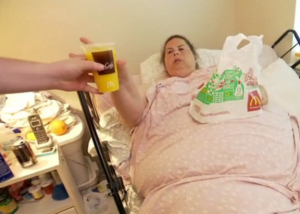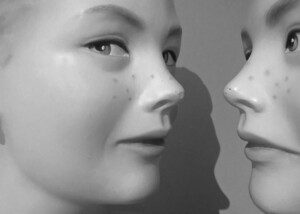
Why a spouse would ever allow hoarding behavior actually has explanations that make sense.
First of all, not every person would allow a spouse to hoard. It’s just that the hoarder lucks out and finds a spouse who decides to stay in the marriage.
So when wondering how a spouse could ever permit hoarding, first realize that most hoarders never marry.
This compulsive behavior doesn’t suddenly drop out of the sky at age 50.
“The basic features typically begin in adolescence,” says Gail Steketee, PhD, Dean Emerita and Professor Emerita, Boston University School of Social Work, co-author of “Stuff: Compulsive Hoarding and the Meaning of Things.”
Those basic features usually become full-blown in the 30s.
“By the time the person is approaching 50, the collecting, difficulty discarding and clutter has become severe enough to seek help.”
So why doesn’t the spouse put his or her foot down with hoarding?
Dr. Steketee explains, “It is awfully hard to decide when normal accommodation to a spouse’s messiness and enjoyment of keeping a lot of stuff has slid into tolerating serious hoarding behavior. I think this is the dilemma many spouses find themselves in.”
The hoarders I’ve seen on TLC’s “Buried Alive” don’t seem like bullies, so I wondered why their spouses wouldn’t take more charge.
Piles of clutter and garbage to the ceiling don’t appear overnight, so where are the spouses while the hoarder’s clutter grows over time?
Dr. Steketee explains, “I do agree that most hoarders are not bullies, although I have seen some exceptions, especially when it comes to someone else touching their things.
“Those who agree to be on TV are likely to be willing to have someone come into the home, perhaps a small subset of people who hoard.
“Most of those we have treated in our program would never allow anyone into the home and are reluctant to have a clinician visit; certainly touching their stuff without explicit permission and in their plain view would make some of them very upset and angry.”
Some people assert they’d never allow a spouse to become a hoarder. I even bring up Kate Gosselin of “Kate Plus Eight”; can you imagine her allowing any husband of hers to collect garbage?
We all know imposing neat freaks who’d fly off the handle over just one bread crumb on the table. Certainly, such a person would never allow hoarding.
“I’m cautious about using words like ‘never,’ but I suspect that such a neatnik spouse would have divorced a messy spouse some while ago,” says Dr. Steketee.
“But hoarding is not just about neatness; it is about attachment to objects with strong emotional reactions for various reasons, depending on the person.
“Many spouses are accommodating because they vowed to do just that when they married.
“Spouses who take these vows seriously and have tried to intervene but without success and in the face of much anger may just have backed off.”
This then becomes something akin to, “It’s my soul mate and her clutter, or a clean house and no soul mate,” in the mind of the non-hoarding spouse.
Hence, the spouse puts up with the hoarding, unable to imagine his or her life alone.
But when divorce occurs that’s triggered by hoarding, whose idea is it usually? The clean spouse, or the hoarder?
Dr. Steketee suggests, “It’s most likely to be the spouse who initiates the separation when they’ve tried hard to help their hoarding partner to change and it’s just not working.”
The subjects you see on “Buried Alive” do not represent most hoarders. Hoarders who’d never want to be featured on “Buried Alive” can be quite steel-boned about their possessions.
Dr. Steketee explains, “A person with very strong attachments and reasons for saving (it’s beautiful, I’ll need it someday, I’d be wasting it) can be very tenacious.
“If a hoarding husband was married to someone who tried to pick up after him, he might explode, she’d back off, and gradually their truce would be evident in piles of stuff she wasn’t allowed to touch but other areas where she controlled the space.” These dynamics are fairly common in married hoarding homes.
If the hoarder succumbed to a demanding spouse’s rules of No More Clutter, would this individual’s psychological issues manifest in some other obsessive-compulsive form?
“We don’t have any special reason to think that a predisposition to saving objects and making piles of clutter would otherwise express itself in compulsive or impulsive behaviors. No evidence there so far as we know at this point,” says Dr. Steketee.
Hoarders typically do not marry people like Kate Gosselin or some otherwise dominant personality who won’t tolerate clutter; if hoarders do marry such a spouse, divorce is inevitable.

 Dr. Steketee
Dr. Steketee
























